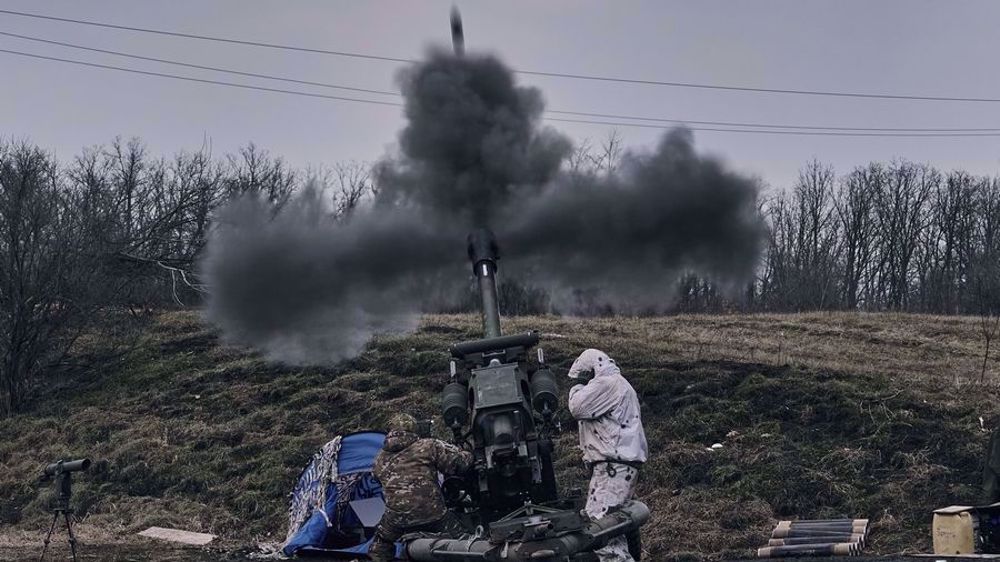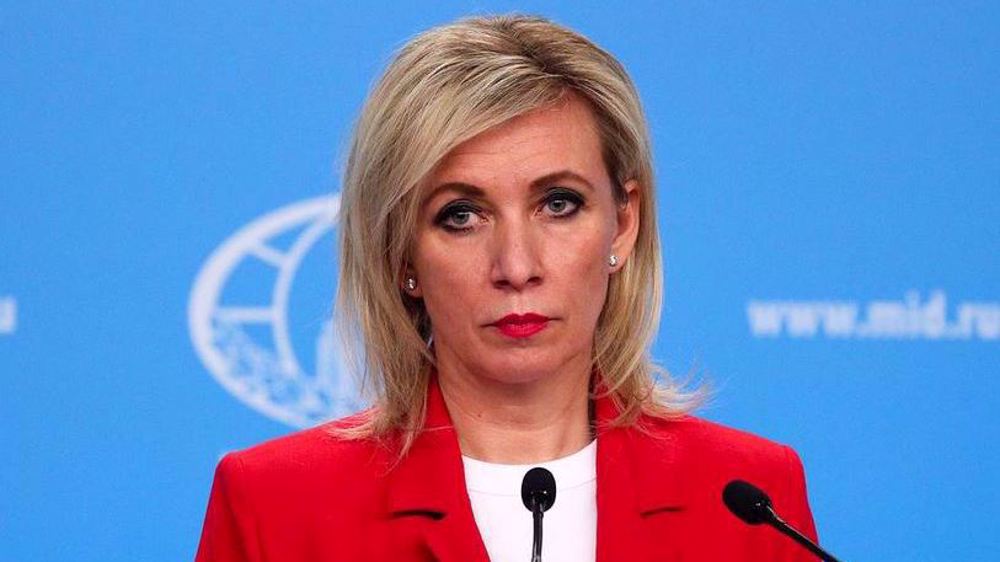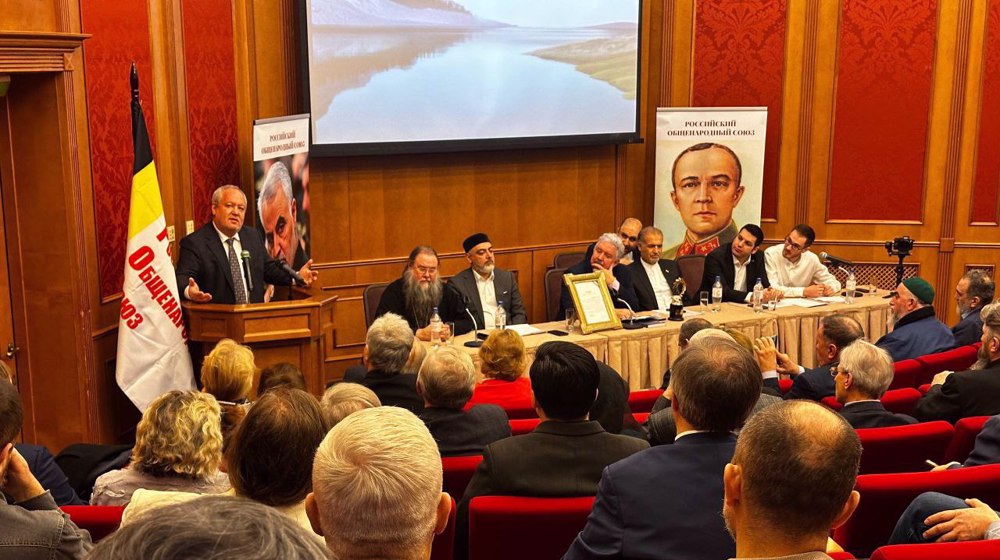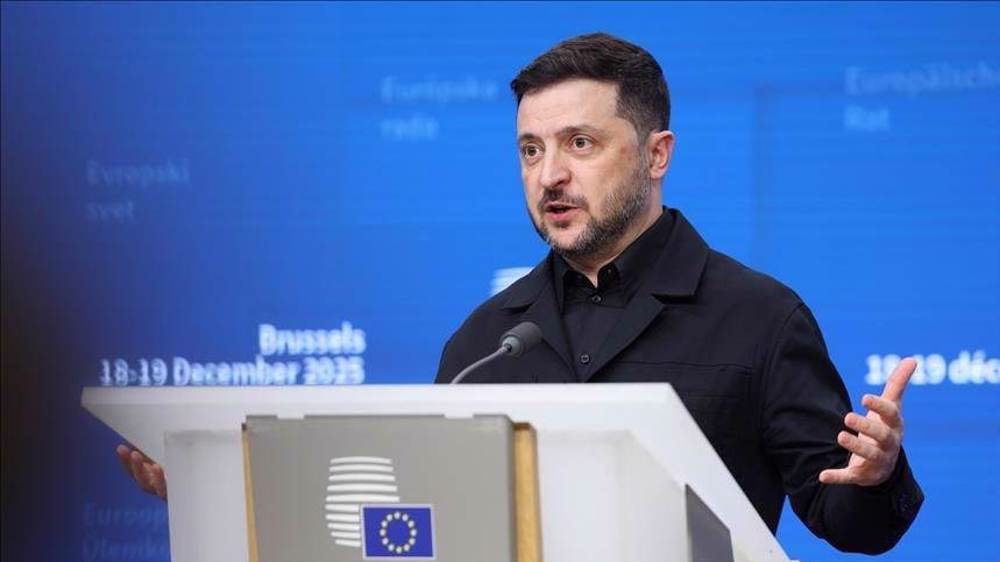Russia pounds Kiev, other Ukrainian cities with barrage of missiles
Russia has fired various missiles, including the hypersonic nuclear-capable Kinzhal, pounding the Ukrainian capital, Kiev, and other cities.
The Ukrainian air force said Russian forces had fired 81 high-powered missiles of different types in a "massive" pre-dawn attack on Thursday.
“The attack is really large-scale and for the first time using such different types of missiles. We see that this time as many as six Kinzhal were used. This is an attack like I don’t remember seeing before,” said Colonel Yurii Ihnat, spokesman for the Air Force Command of Ukraine.
Russian defense ministry spokesman Igor Konashenkov said all targets had been hit during Russia's "retaliation" missile strike on Ukraine in response to a recent incursion in Russian Bryansk region.
Konashenkov also said during the strike Ukrainian "UAV bases were destroyed, transfer of reserves and transportation by train of foreign equipment were thwarted."
According to the Ukrainian military, an unspecified number of combat drones sent from Russia aided the missile barrage against designated targets in the ex-Soviet republic.
The unprecedented aerial assault, which set off air raid sirens all across Ukraine early Thursday, killed at least six people and damaged critical infrastructure or residential buildings across the country.
"The enemy used a wide spectrum of weapons. Why are they doing this? In order to distract air defense units. They carried out an attack with various types of aircraft and vessels of the Black Sea Fleet from all fronts, from three seas, basically - the Black Sea, the Sea of Azov and the Caspian Sea," Ihnat said.
The military also said that its forces managed to destroy 34 cruise missiles and four suicide drones, and prevent at least eight drones and guided missiles from reaching their targets.
The hypersonic missiles, however, pierced Ukrainian air defenses as Kiev currently does not possess any assets to intercept them.
“So far, we have no capabilities to counter these weapons,” Ihnat said, referring to the nuclear-capable Kinzhal, plus six X-22 air-launched cruise missiles that were also launched by Russian forces.
According Ukrainian officials, the strikes cut off the last remaining external power line to the Zaporizhzhia Nuclear Power Plant, located in eponymous territory held by Russia, forcing the plant to rely on generator power.
"It’s been a difficult night,” Ukrainian President Volodymyr Zelensky wrote in a Facebook message.
“The enemy fired 81 missiles in an attempt to intimidate Ukrainians again, returning to their miserable tactics. The occupiers can only terrorize civilians. That’s all they can do. But it won’t help them. They won’t avoid responsibility for everything they have done,” Zelensky said.
The Ukrainian president also listed 10 regions across his country where aerial attacks took place, including Dnipro, Odesa, Kharkiv and Zaporizhzhia, saying that the attacks hit “critical infrastructure and residential buildings.”
Russia launched a military offensive in Ukraine on February 24, 2022. Since then, the US and Ukraine's other allies have sent Kiev tens of billions of dollars worth of weapons, including rocket systems, drones, armored vehicles, tanks, and communication systems.
Poland on Thursday said it had delivered to Ukraine the additional 10 Leopard 2A4 tanks it had promised, while allies would send theirs shortly.
"We're talking about a battalion of heavy tanks which, in the case of Poland's share, have already been delivered and, in the case of our allies, they will be delivered to Ukraine very soon," Defense Minister Mariusz Blaszczak told reporters.
Warsaw had promised to ship a total of 14 German-made Leopard 2 heavy tanks to Kiev. The first four were delivered in late February, on the first anniversary of the war in Ukraine. Blaszczak also said Poland would set up a service hub for the battle tanks used in Ukraine.
Blaszczak said the tanks to follow from allied countries include eight from Canada, eight from Norway and at least six from Spain.
Germany initially resisted the pressure from allies to authorize the move but early this year, Berlin agreed to send its own Leopards and greenlighted the deliveries from other countries.
Resources for two more years of war
Lithuania's military intelligence service said it estimated that Russia had enough resources to wage two more years of war in Ukraine.
"Russia had been accumulating weapons and equipment over the long years of the Cold War," military intelligence chief Elegijus Paulavicius told reporters.
"We estimate that its resources would last for another two years of a war of the same intensity as today," he said, speaking alongside his counterpart from civilian intelligence at a presentation of their annual report.
The assessment, he said, depended on the perspective that no foreign country would provide military aid to Moscow.
Russia has a large amount of weaponry stored in its reserves, which would allow them to "cause enormous damage and increase the costs of restoration," he said.
Somalia officially demands Israel reverse recognition of Somaliland
Hezbollah condemns deadly terror attack on worshippers in Syria’s Homs
VIDEO | US military build-up in Caribbean
Iran parliament probes missing $6.7bn in oil export revenues: MP
Saudi-backed coalition vows to counter UAE allies in Yemen
VIDEO | Heavy rains, flash floods leave Southern California homes caked in mud
‘He chose to save lives’: Netizens rally for Gaza doctor’s release after a year in Israeli jail
US uses Iraqi airspace to spy on Iran, says Iranian ambassador to Baghdad











 This makes it easy to access the Press TV website
This makes it easy to access the Press TV website